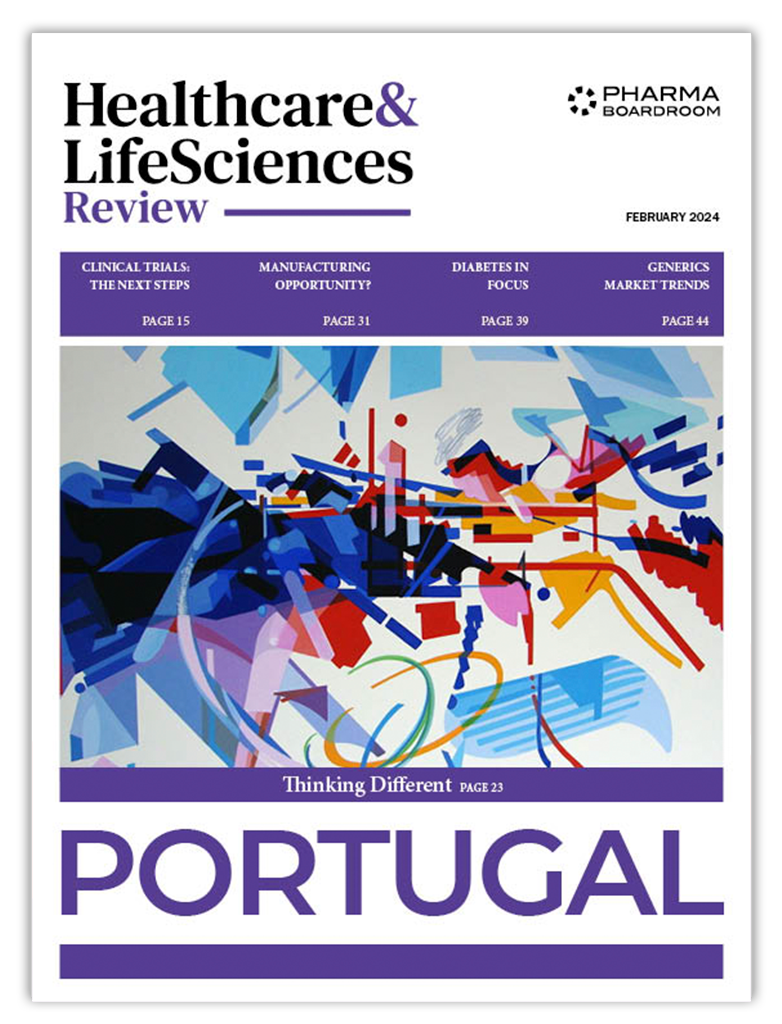Recognized as one of the ten most innovative companies in the world, Hamilton has a regional HQ, strategic R&D and manufacturing operations tucked high away in the scenic Swiss Alps. Andreas Wieland, CEO of Hamilton’s Swiss businesses, discusses the company’s approach to innovation and the factors that have helped Switzerland become the most innovative country in the world.
To begin, could you please introduce Hamilton and your presence here in Bonaduz, Switzerland?
Hamilton’s operations in Bonaduz span the whole range of Hamilton’s global product portfolio, and serves as the international headquarters leading all of the commercial operations across Europe, the Middle East, and Asia. The Hamilton Medical ventilator business is headquartered here too, with all R&D and manufacturing for this business taking place from Bonaduz.
We also carry out R&D and manufacturing operations for the rest of the Hamilton portfolio, in parallel with Hamilton’s R&D and manufacturing facilities in the US. This includes advanced automated robotics for applications including next-gen DNA sequencing, DNA fingerprinting, celomic applications, and molecular diagnostics, as well as large automated bio-sample storage machines, and then a vast array of laboratory items, from pipets and syringes to innovative sensors and process analytical technologies.
To accomplish this wide array of activities, we have over 900 employees working at this site in various capacities. About one third have graduate degrees from universities, as we do a lot of R&D work here, however we also host about 60 apprentices from vocational training programs at any time. As such, we are the second largest employer in our region, the Graubünden Rheine Valley, and are proud to play an important role in our community. We are also currently expanding our operations, and are building a second facility in nearby Domat-Ems. This site will host an additional 100 employees, working in both R&D and manufacturing; however, each of these jobs will be very high impact as we are investing a lot in the automation of this facility, which we are working to configure according to Industry 4.0 principles.
What does innovation mean to Hamilton?
Hamilton is an incredibly innovative company, so much so that we have been listed as one of the most innovative companies in the world. Last year, we made 30 scientific discoveries in Switzerland, which will result in about 150 patents. By comparison, the EPFL in Lausanne made about 40 discoveries last year, while the ETH Zürich made about 50. So as a single company, you could say we are achieving perhaps half the innovative output of a global top 20 university.
As this illustrates, Hamilton as a company is driven by innovation. Our sole focus is on developing new and innovative solutions which can bring value to our customers. Our strategy in this regard is two part. First of all, our short-term focus is on developing new applications, and creating solutions in line with lean management and cost reduction programs. Secondly, over the longer-term horizon, we have the strong ambition to develop disruptive technologies.
Moreover, we see that we are well positioned as a company to play a role in driving industrial transformations around topics such as commercial digitization, the internet-of-things, and Industry 4.0 manufacturing principles. We make sensors, robots, databases and apps – these are our tools, and with them we are working to help our customers operate more efficiently. At the same time, we are very much embracing technologies like artificial intelligence and other digital tools to streamline and automate as many aspects of our own operations as possible, from administrative tasks like bookkeeping, to the types of channels by which we engage with customers.
[Featured_in]
What are some of the new products and technologies that you are most excited to bring to market?
We have created a disruptive new system based on microfluidics and a mobile app that will calibrate and validate the precision of liquid handling equipment like a pipette. In the past, you had to use a very precise, very expensive scale to measure the accuracy of such liquid handling equipment, by measuring the weight of an amount of liquid purported to be of a certain volume. With our new system, the liquid is instead used to fill a series of microfluidic channels on a plate, the greater the volume of liquid the greater the length of the portion of the channel that it occupies. The user can then take a photo of the plate, send the image to Hamilton, and our system can automatically verify that the volumes are sufficiently accurate by visually measuring the length of the filled portion of the microfluidic channels, and if so the system then can send back an electronic certificate of validation.
A second example I would highlight are the advances we have made in the area of digital sensor technology. Up until just a few years ago, a common pH sensor used in an industrial chemical setting would be an analogue sensor which would require a bulky receiver to receive the information and then encode it digitally, with such analogue sensors and receivers subject to interference and background noise. Starting a few years ago, Hamilton has begun introducing miniaturized fully digital PH sensors to the chemical industry, followed by a range of other miniaturized fully digital sensors. Such sensors are very much enabling the industrial transformations around such concepts as the internet-of-things and Industry 4.0 principles.
A third technology I would highlight is Hamilton Medical’s INTELLiVENT-ASV, which features a fully closed loop control system – the only ventilator on the market with this level of automation. This means that instead of setting the parameters for the ventilators operation, the physician sets targets for vital statistics of a patient such as PetCO2 and SpO2, and then guided software which processes data from wide array of sensors, the ventilator will automatically set controls to help the patient reach those targets.
What would you highlight as the key assets that have enabled Switzerland to achieve and maintain its position as the most innovative country in the world – at least as measured by the EU Innovation Scorecard?
[related_story]
Switzerland has a strong tradition in the fields of robotics and automation, as well as in sensors and analytical technologies. In more recent years, the constantly rising value of the Swiss Franc has put pressure on Swiss firms to constantly improve efficiency, and this has driven many companies to strongly embrace automation. As such, today Swiss companies certainly have a lot of expertise in this area.
The other critical side of things is education. I would highlight that Switzerland has two fantastic technical universities being the ETH and the EPFL; the ETH is very much a global leader in areas such as data analytics which are very important from the standpoint of private sector innovation. However, just as important as great universities, Switzerland also has a very effective system of vocational training programs and apprenticeship. Austria and Germany also have similar types of programs, where children at the age of 15 or 16 start working three days a week along with two days of study, and this really helps to develop a lot of fantastic practical skills. After getting their diplomas – most of Hamilton’s apprentices would get a diploma as a Mechanical Worker – they have the option to go on to university if they want. From experience, with some individuals who have gone on to get engineering degrees after doing an apprenticeship, it is clear that this develops excellent practical skills, and as an employer we hire these employees very highly as they are very effective hands-on problem solvers.
This system of apprenticeships is a very important factor that supports Switzerland’s ability to remain an innovative leader, and that is supporting the productivity of Swiss companies. Moreover, I think it is very important in terms of flexibility – as in the future, people will have to change jobs more often than seen in the past. The great thing is that in Switzerland young children who don’t know what they will want to do long term can get the opportunity to develop hands-on skills, and yet they still have the freedom to go back to the academic world and study new things when the time comes.
Hamilton is an American family company – what is the story behind how the company came to have such a strong presence in Switzerland?
Clark Hamilton, the founder of our company, decided in the 1960s that it was time to establish a presence in Europe. He had personal connections in this region, and when he approached them regarding his plans, they immediately put him in touch with the cantonal authorities in Graubünden. At the time, this region’s economy was mostly concentrated on agriculture, tourism, and hydroelectric power generation, so the authorities jumped on this opportunity and very quickly put together a very attractive solution, even finding a nice location for the company. This being the 1960s, Mr. Hamilton was quite surprised to see this type of friendly, flexible, and pragmatic political environment, and as a naturalist who loved the beautiful natural mountain scenery we have here in Bonaduz, he took this proposal, and the rest is history.







